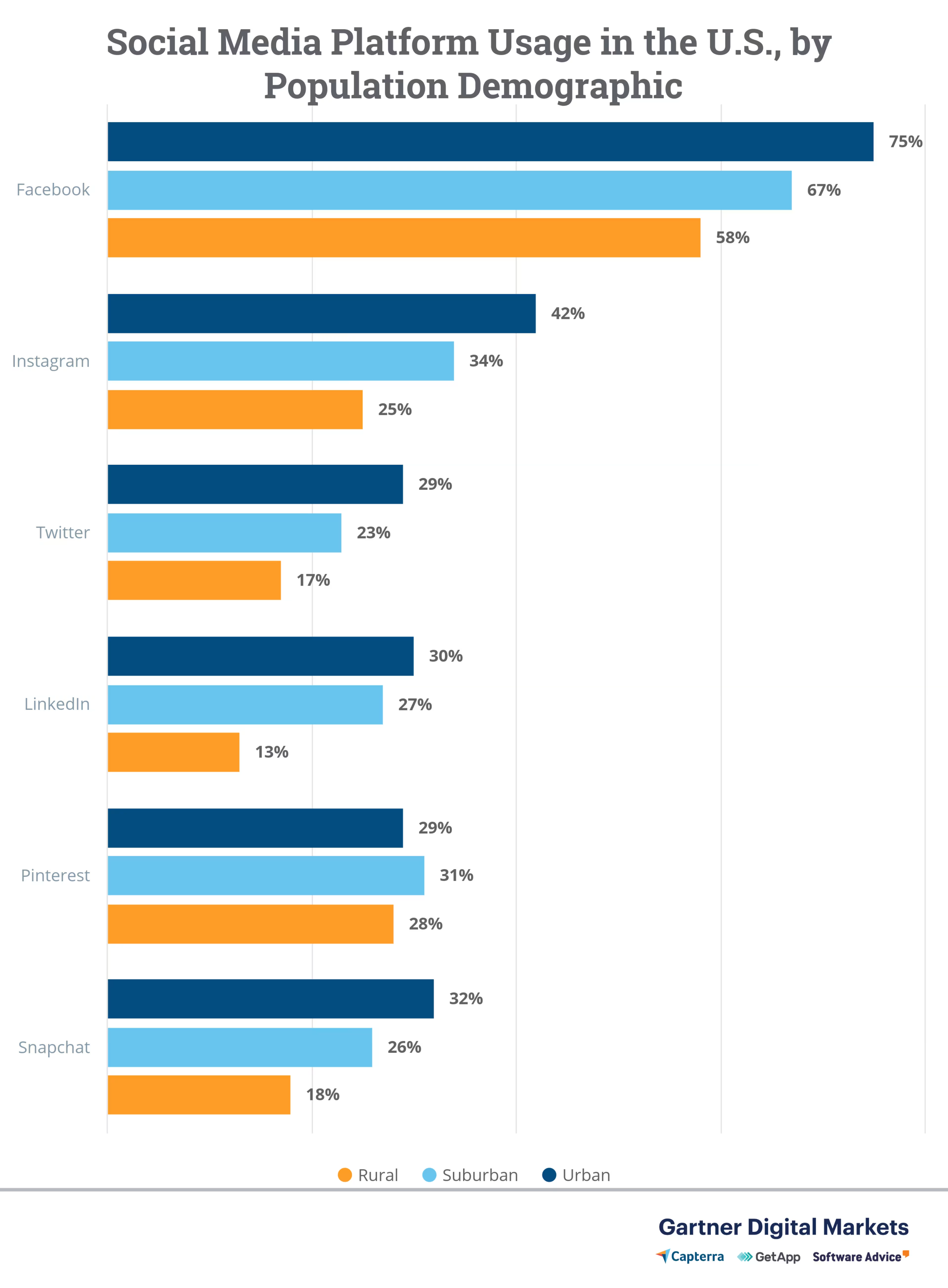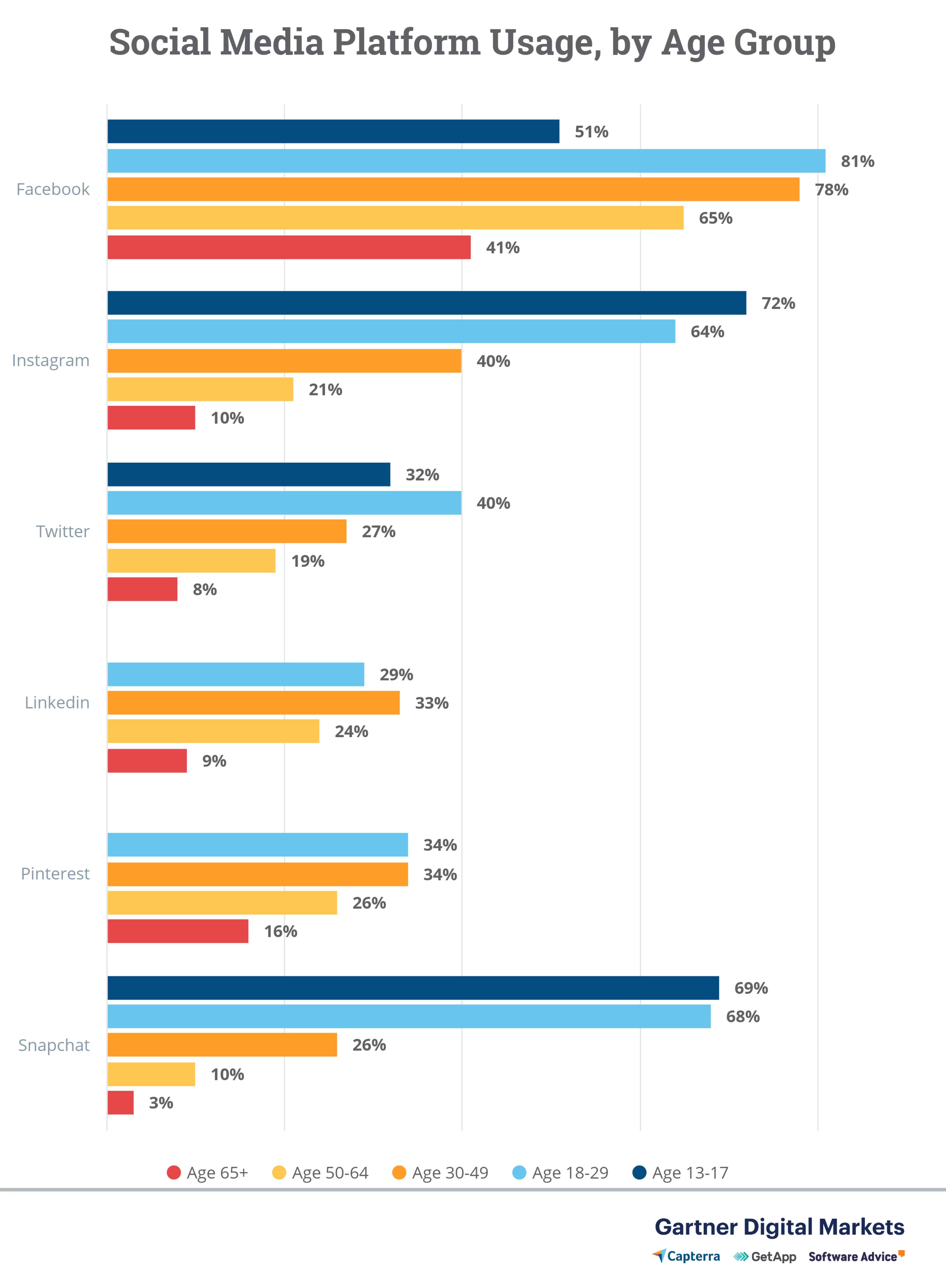Social media segmentation is vital to targeting key audience demographics. But what is it, exactly?

I was once mocked by a student of mine about Facebook. “You are so old," the child scolded me. “Only old people have Facebook."
In addition to it being a crushing indictment of my entire life that I didn't have a TikTok account, it was a good lesson in why social media segmentation is so important to your marketing campaign.
Different social media platforms cater to different groups of people. Even within a single social media platform, like Facebook, different users use it in different ways.
You need to know who's using what, or you'll end up dedicating time and resources to a channel your audience isn't using . The best way to avoid doing that is with social media segmentation.
In fact, social media segmentation can help boost your entire marketing strategy by not only saving you time and money but also by making you more effective in the channels you do use.
I'm going to explain what social media segmentation is, give you a demonstration of what you can learn from segmentation, and then show you how to get started segmenting your own client base.
What is social media segmentation?
Social media segmentation is breaking down your audience demographics within and between different social media platforms.
It gives you an understanding of the different groups of people using various social media channels so you know which channels to employ to reach those groups.
Discover who uses what social media platform
You've done your research. You've built out buyer personas, and you know who you need to target. Now find out where they are.
Let's first break down which social media channels are going to be the best for a B2B marketer to engage in, depending on your customers and target markets.
Here are a few of the ways you can look at the demographics of different social media platforms:
Which regions use which social media platforms?
By country
Many countries have social media platforms unique to them, such as China's WeChat. If you're looking to focus on a specific country, do a quick Google search to find the social media outlets popular in your target country.
Major social media platforms often report their U.S. versus international traffic.
For example, almost 50% of Twitter's 2018 revenue came from international traffic. Compare that to LinkedIn, which has 74% of its membership based outside of the United States. Facebook takes it one step further: Only 11% of its users are U.S.-based.
Other companies, such as Pinterest and Instagram, might be less receptive to revealing their exact user demographics, though Instagram notes that its second most popular country (after the U.S.) is Brazil, followed by India.
By population demographics
But say you aren't interested in looking at international expansion and you just want to focus on potential leads and their social media preferences by the characteristics of the area they live in.

Let's take a look at some U.S. statistics from the Pew Research Center:
Almost across the board, the majority of social media's audience is based in cities.
So, the leads you get from social media are more likely to come from the cities, which makes sense when you factor in the fact that, according to the Pew Research Center, more people live in cities than the suburbs or rural areas. That same study shows that those in the city are more likely to be diverse, young, and an immigrant.
Having a diverse audience means that it's an even more impossible task to send one message and have it return a consistent result across the social media audience.
We'll get into some strategies that you can implement in order to better reach your target demographic, but first let's look at one more means of segmentation.
Which age groups use which social media platforms?
Age is a key determining factor in both how you should treat a lead and which social media platform they're likely to use.
For example, younger people are less likely to be CMOs, are less likely to have sole decision-making power over purchasing at their company, and are more likely to act and advise based on brand awareness (full research available to Gartner clients).
So which platform should you use to reach which age group?
Let's look at the stats reported by Sprout Social:

This should give you a clear understanding of which age groups prefer which platform. For example, on average, C-Suite execs are around 54 years old, which means far and away the best place to reach them would be on Facebook.
Age determines how audiences interact with brands on social media
Another key factor to consider is this: A person's age impacts how they interact with brands on social media.
Gartner found that those over the age of 39, for example, are motivated by exclusive discounts and promotions, while a younger audience will follow brands because they like the brand or are familiar with it.
So what can you do with all of this information to boost your marketing strategy?
2 ways to boost your marketing strategy with segmentation
1. Use your own data to segment your audience between and within social media channels
If you've been reading this blog for the past year, you've probably read some of the many articles where I talk about the value of collecting data on your leads and customers.
This is where that data comes into play.
You've built out your buyer personas, you've established customer profiles, and now you can act on those through social media segmentation.
If your product is geared towards people in a rural environment, like farm management software, then you're going to have a harder time reaching them through social media. But you will have a much easier go of it marketing via Pinterest than if you're marketing to an urban environment, where Instagram and Snapchat would be stronger plays.
According to an informal survey by Incfile, 42% of solopreneurs and startup founders began their company when they were in their 20s. If that's your market, Facebook is your No. 1 tool, but Snapchat, Instagram, and Twitter should be your next social media platforms.
2. Use social media platform tools to shift how you use each channel
No two social media channels are exactly the same: They have different users, different rules (to #hashtag or not to #hashtag), and different tools to help you segment your audience.
Some platforms, like Facebook, offer segmentation tools that allow you to focus your messaging on certain age groups, industries, locations, etc. It's incredibly thorough, which is especially useful given that Facebook is the farthest reaching and most profitable of marketing platforms in this space.
However, not every platform has that tool in place. So here are a few tips for how you can effectively reach the different segments of your audience across social media platforms:
Create multiple accounts for different facets of your business that reach different audiences within each social media platform (i.e. Capterra has @Capterra, @CapterraMktAuto, @CapterraPM, etc.)
Use each social media platforms' proprietary grouping option (i.e. LinkedIn groups, Twitter lists, etc.) as a means of targeting your messaging.
Test out timing your messages for different points in the day to see which posts get the most engagement from which segments of your social media audience
Go beyond regular demographic segmentation and try segmenting based on new vs. established leads, brand ambassadors vs. silent customers, etc.
This will not only make it easier for you to focus your content on specific leads and buyers based on which segment they fall into, it will also make it easier for you to track just how effective your targeting is by giving you smaller data sets with significantly fewer outliers.
First next step: Know your ideal customer
I know you're champing at the bit to dive into social media segmentation, but the first step is to make sure that you have collected enough data on your current customers to know who your ideal customers are.
Once you do that, you can start to use your knowledge on social media.
If you're ready for that step, take a look at our directory of social media management software. Most of them can sync up with your CRM software to make that transfer of data, and the segmentation of your social media followers, a little bit easier.
Browse our list of top companies and learn more about their features in Capterra’s advertising agencies hiring guide, digital marketing agencies hiring guide, and social media marketing agencies hiring guide.